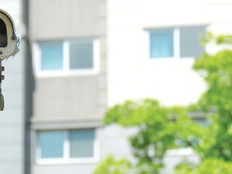How Colleges Are Rethinking Network Infrastructure to Support Student Demand
Just over a decade ago, the demands on college and university networks largely stemmed from business and research applications.
IT administrators could predict, with more or less certainty, how much bandwidth the human resources department would need to process payroll or how much capacity the physics department required to conduct its research, and could build out its network accordingly.
Some students took advantage of fast campus connections to share and download music on their off hours, but their computers largely sat idle while they were in class, freeing up capacity for other applications across the organization.
Fast-forward to today, and the script has flipped. Faculty and staff still make their fair share of demands on campus networks, but students now drive the need for increased capacity, as many bring multiple mobile devices to campus and expect them all to connect instantly, reliably and simultaneously.
“In the course of 15 years, we’ve gone from most students carrying zero wirelessly connected devices to two or three, on average,” says Nolan Greene, a research analyst in IDC’s Network Infrastructure group. “In addition to that, you have increasingly rich multimedia applications running on those devices.”
The need to support multiple mobile devices per user is prompting many colleges and universities to beef up their wireless infrastructure, which in turn reverberates throughout the network.
In order to support the sea of student smartphones and tablets on campus, colleges might deploy dozens or hundreds of new 802.11ac access points. Then, in order to support the new APs, cabling and switching may also be upgraded, all the way to the core of the network. On many campuses, a veritable arms race to build capacity has led to the sort of sophisticated network infrastructure that one might more likely expect to find inside the country’s largest and most well-funded corporations than among the halls of higher learning.
Percentage of college students who used tablets or smartphones to help them study in 2014, a 40 percent increase from the year before
SOURCE: McGraw-Hill Education and Hanover Research, “The Impact of Technology on College Student Study Habits,” March 2015
“The role that IT plays in the education process is growing, in terms of web applications for learning, in terms of different types of interactive applications,” says Greene. “I think as time moves on, the needs [of universities and large corporations] are increasingly similar.”
Raising Capacity to Meet Demand
“What we have rivals large public and private universities, even some Fortune 500 companies that have substantially larger budgets,” says Pete Mizera, CIO at Governors State University in University Park, Ill.
Only a year ago, Mizera could not have made such a claim. The public university, which enrolls 3,526 undergraduates and 2,194 graduate and doctoral students, had just 55 wireless APs, covering about 60 percent of the campus. But the university’s transition from a two-year, so called “upper division” campus — geared toward students who had already completed two years of community college — into a four-year undergraduate university helped to pave the way for a comprehensive network upgrade.
The university moved from a 1 Gigabit Ethernet network to a 10 Gig-E backbone, installing two Cisco Nexus 7706 switches in its main distribution frame. Mizera and his team also installed 126 Cisco 3850-48F Series stackable switches across the network, two Cisco ASR 1001-X routers to allow for redundant Internet connectivity in the main distribution frame, 238 Cisco Aironet 2700 Series 802.11ac indoor APs, and a dozen Aironet 3500 series 802.11ac outdoor APs. The APs are connected via a wireless mesh. Additionally, the university deployed Cisco Identity Services Engine for network authentication. Previously, the wireless network was open to anyone.
“Now we have technology in place that allows us to better monitor usage and manage bandwidth differently among employees, students and guests,’” Mizera says.
Pioneering a Whole New Campus
The previous setup was showing subtle signs of performance issues, and was not going to keep up with increasing demand for pushing video content across campus. But it was the university’s expansion that truly spurred officials to take action, Mizera says.
“It’s a whole different kind of campus now — it’s a whole different kind of university,” he says. “Improving the backbone and implementing the wireless mesh was part of getting ready for that.”
Percentage of college students who use two or more mobile devices during an average day
SOURCE: Pearson, “Student Mobile Device Survey,” May 2014
North Central College in Naperville, Ill., also upgraded recently from a 1 Gigabit Ethernet to a 10 Gig-E backbone. Additionally, the college doubled the number of wireless APs on campus, from 370 to about 730, which could rise to 1,000 in another year.
“The needs are different than they used to be,” says Matthew Burden, North Central’s CIO. For the recent network refresh, he says, “we wanted to make sure we had high availability, recoverability, scalability and manageability.”
While North Central College wasn’t in any immediate danger of overloading its 1 Gig-E backbone, the funding was available to make the upgrade, and IT staff thought it was important to prepare for future needs. “We want to have a network that we won’t have to refresh for the next five to seven years,” Burden says.
The chief driver for additional capacity there turned out to be the college’s residence halls.
North Central strives to equip dormitories and residences to handle five to seven devices per student, even though students currently connect an average of two devices at any one time.
“You throw in a gaming console, you throw in a smartwatch, a phone, a tablet, a laptop, TV, printer — everything is Wi-Fi–enabled these days. To be able to support that level of use, we needed a scalable infrastructure.”
Upgrading Provides Unique Challenges
Bob Lim, University of Kansas CIO, says universities face challenges that even many large corporations do not.
Obviously, most companies don’t have 30,000 users who are downloading videos, streaming music and doing Internet research on their personal devices, for example. But, more broadly, colleges and universities must account for use that goes beyond bottom-line considerations.
“I consider us almost a small nation,” Lim says, noting that Kansas now deploys 802.11ac APs and CAT 6 and CAT GA cabling. “Our role is more than just about dollars and cents. We are also about educating our students so they become worldly. We have to develop an infrastructure to connect people from all around the world.”
While businesses can dictate how employees use IT resources, universities typically have no such luxury, Lim adds.
“The people who we work with aren’t all employees of KU,” he says. “As a flagship research institution, our solutions must be very flexible and malleable. A corporation has the ability to decide whether they’re going to offer BYOD. We need to allow our users to bring their own devices, and we need to be able to support those devices.”
For most institutions, denying students access to the social and gaming applications they have come to view as an integral part of their lives, even if they don’t always serve an educational mission, simply is not an option.
Students don’t view fast and reliable wireless Internet for all of their devices as a luxury, along the lines of large swimming pools and deluxe cable TV packages, Greene says. Instead, that sort of connectivity has become a baseline expectation.
“Enterprise grade wireless in education is pretty much table stakes at this point,” Greene says. “It’s not something that I can see as being optional.”
Burden says that fast and ubiquitous wireless access can even be a factor in retaining students from one academic year to the next. He recalls a time last year when students at some colleges and universities threatened to riot if they couldn’t play a popular video game online.
Many institutions initially blocked access to the game because networks identified it mistakenly as a peer-to-peer file-sharing service, Burden says. North Central became one of the first to allow students to connect to the game over its network.
“It’s an example of the lengths we’re willing to go to, to make sure students have an enjoyable experience while they’re here on campus,” he says.








